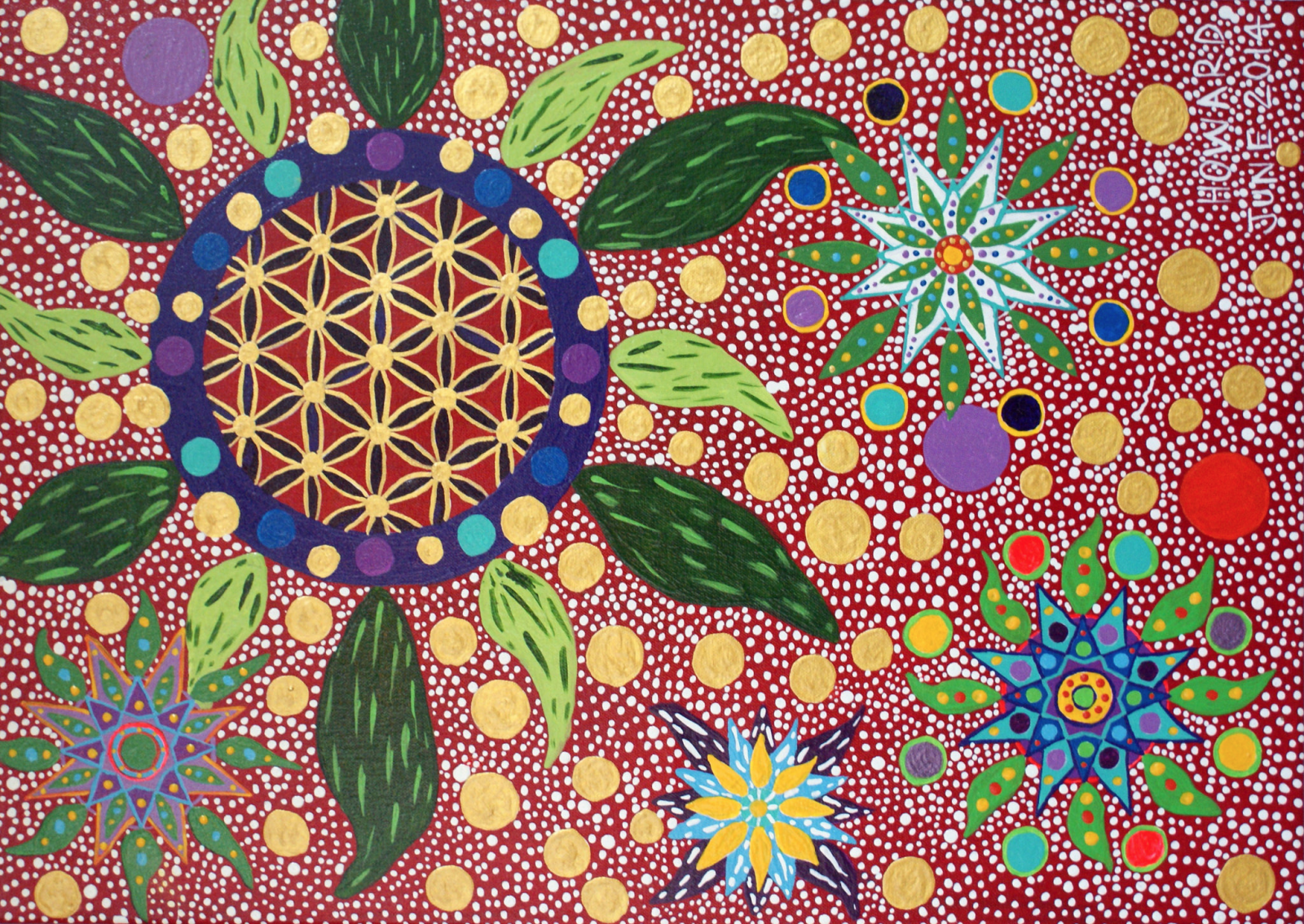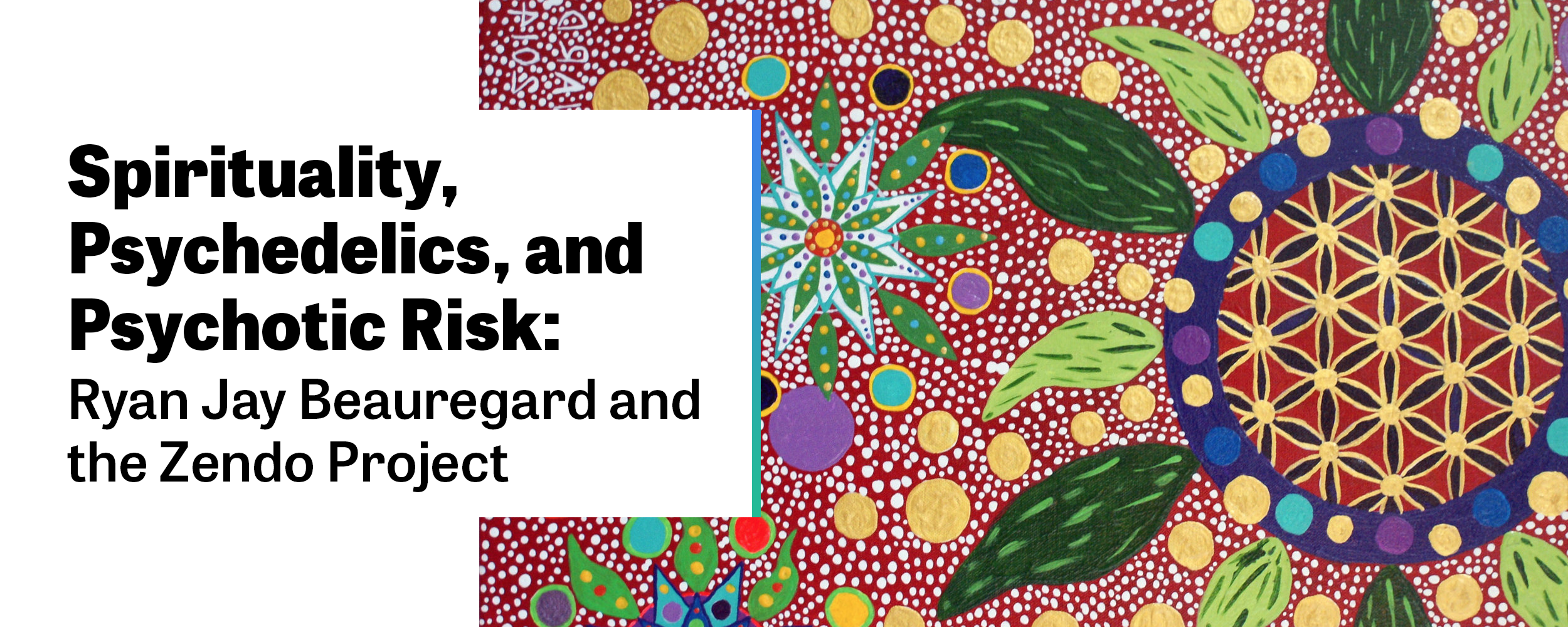
Ayahuasca-inspired painting by Howard G. Charing, via Flickr Creative Commons
Writing and Interview by Lydia Laurenson
Published November 11, 2019
The world of psychedelic drugs can be a surprising intersection of parties, spirituality, and mental health.
Many people use these substances entirely, or primarily, in party settings.
At the same time, psychedelics are also used for therapeutic purposes, and are increasingly seen as a promising treatment for mental illness in the Western medical framework (a treatment advocated by organizations like the Multidisciplinary Association of Psychedelic Studies).
And simultaneously, psychedelics have long been seen by different spiritual traditions as a numinous doorway.
The reality of psychedelics is that they are all these things. They can have a powerful effect on mental health; they can lead to spiritual openings; and they can be super fun at parties. Plus, there's one more reality to grapple with: They are largely illegal. This means that:
- Psychedelic experiences are not well-studied from a modern scientific perspective, since it would be illegal to set up a scientific experiment.
- People frequently have major spiritual experiences, and/or mental health experiences, in the middle of party settings where they took psychedelics. And not all parties are well-prepared for this eventuality.
- In places where psychedelic communities have been able to form healthy foundations — like, for example, the Burning Man community — there are community strategies to support the extreme outcomes that can emerge from psychedelics.
- Some of those communities contain people with a lot of applied experience in this area, though they usually operate under the radar.
Ryan Jay Beauregard is one of those people... and he's public about it. He once had a psychotic break on psychedelics and recovered from it, and now he works to create infrastructure for others in the community who go through the same thing. Ryan's story is useful for those of us who care about building a stronger culture around (a) mental health, (b) spiritual practices, and/or (c) psychedelic usage. We need to work towards understanding how all these things intersect, and to understand the real experiences involved.
I met Ryan at the Burning Man Festival in 2016, where he was helping run the Zendo Project. The Zendo Project creates safe spaces for festival attendees experiencing psychological or psychedelic overwhelm. If people at the festival have a hard time processing their psychedelic experiences, then they can go to the Zendo Project to receive peer counseling and support.
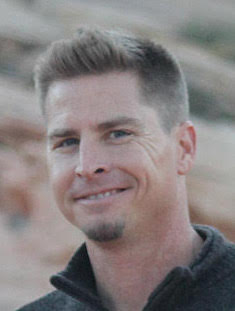
Ryan Jay Beauregard
When I met Ryan at Burning Man, he told me that the Zendo Project also receives people going through major spiritual experiences. Sometimes those experiences are attached to psychedelic substances, and sometimes they aren’t. The Zendo Project also works with Festival Medical and Security to offer support for mental illness issues.
At this juncture, it’s worth noting that many thinkers believe mental illness can be part of spiritual awakening (whether attached to psychedelic usage or not). For example, the Czech psychiatrist and consciousness researcher Stanislav Grof has written extensively about his belief that “many conditions which are currently diagnosed as psychotic and indiscriminately treated by suppressive medication are actually difficult stages of a radical personality transformation and of spiritual opening.”
This comes up when people talk about mental illness and spiritual practice — again, even aside from psychedelic usage. Meditation, for instance, is widely considered harmless — and yet meditation can lead to various types of mental illness. For example, one self-reported story from a meditator (who says they have never taken drugs) tells the story of a psychotic break:
After finishing [a 3-month meditation retreat] I went to another center in UK for a couple of weeks and continued with this practice, but now instead of just two short sessions a day, I was totally obsessed with it, spending 6-8 hours meditating per day after some light work in the morning. Eventually I reached the point when I felt totally clean, and that is when hell broke loose.
While meditating the last day I finally could see love as an underlying force in the universe, and I had a waking dream of some fractal patterns realigning, it is hard to describe with words. ... Things started getting weird with my "intuition"... At this point I was already out of myself, my actions were being more controlled by my random instincts than by my rational mind. I would see "signs" everywhere... It is still embarrassing to remember all the details of this, but it can be summarized with one word: delirium. I was totally out of myself, and what is worse, I was acting in inappropriate ways with other people... Eventually when I was running wild in the streets, whirling around and eating flowers, somebody called the police and they brought me to the hospital.
Again, this story comes from someone who says they have never taken drugs. And there are plenty of other stories about stuff that looks like "mental illness" happening during meditation retreats and other spiritual practice.
One U.K. psychiatrist, Dr. Willoughby Brittain, researches “the dark night of the soul” that can result from meditation. A writer for The Atlantic covered Brittain's "Dark Night Project" in 2014; the article delves into her thoughtful critiques and mixed feelings:
As a trained clinician, it can be hard for Britton to reconcile the visible benefits of contemplative practices with data unearthed through the Dark Night Project. More than half of her patients reported positive "life-altering experiences" after a recent eight-week meditation program, for example. But, she says, "while I have appreciation and love for the practices, and for my patients … I have all of these other people that have struggled, who are struggling."
Then there's the historical example of Dick Price, who founded the famous spiritual-psychological retreat center Esalen, in California. Price had multiple psychotic breaks, and he founded Esalen partly because he wanted to provide an alternative to the Western mental health system. In an interview from 1985 posted on the Esalen website, Price talked about his experiences being committed and said: “There was a fundamental mistake being made and that mistake was supposing that the healing process was the disease, rather than the process whereby the disease is healed. The disease, if any, was the state previous to the ‘psychosis.’ The so-called ‘psychosis’ was an attempt toward spontaneous healing, and it was a movement toward health, not a movement toward disease.”
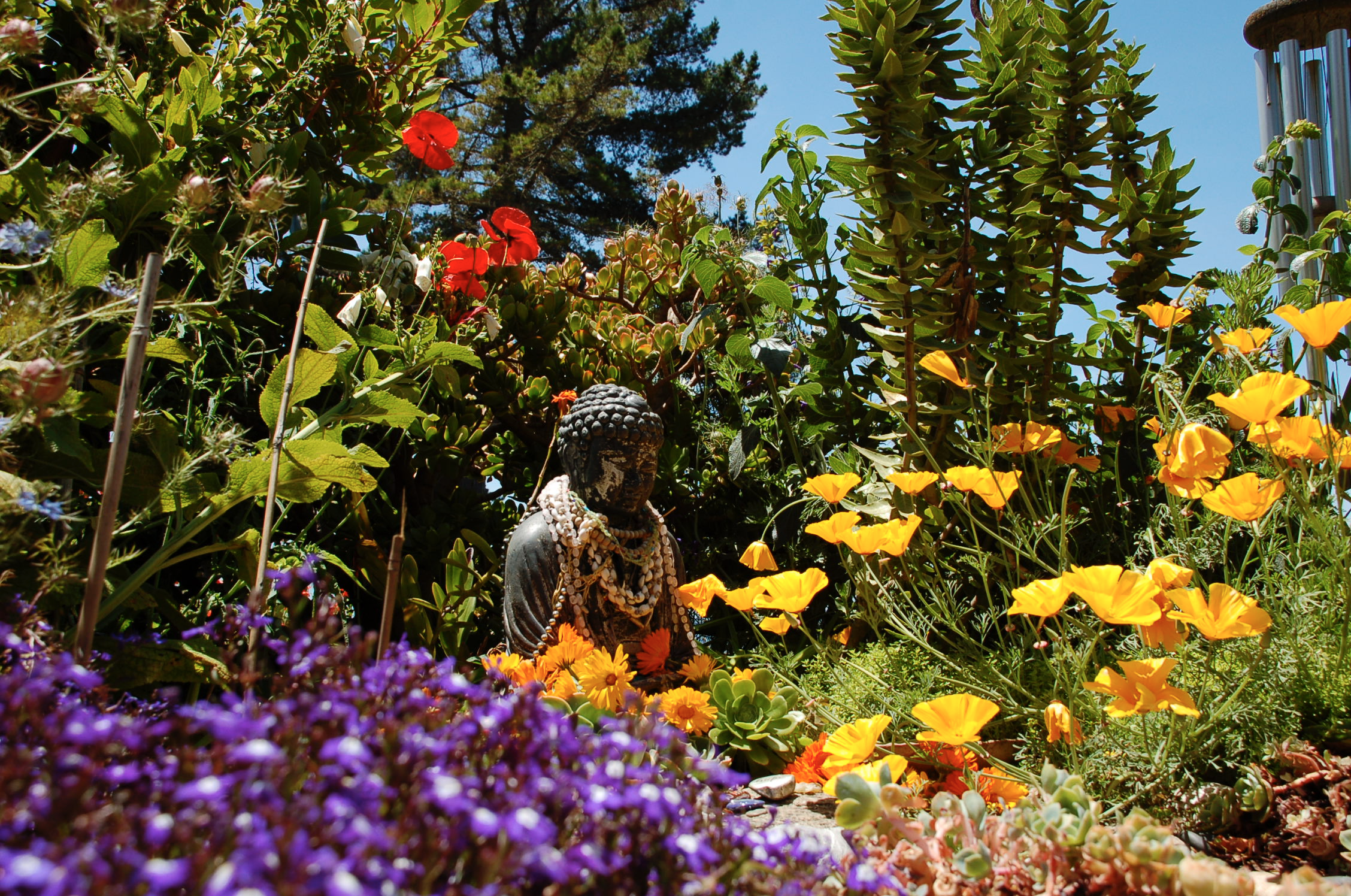
A garden at Esalen Retreat Center. Photo by Brad Coy, via Flickr Creative Commons
And so, when I talked to Ryan Beauregard at the Zendo Project during Burning Man, I was not surprised to learn that Ryan himself once had a psychotic break. It happened during a ten-day retreat taking an admixture of ayahuasca called Chiric Sanango (a plant brew with hallucinogenic effects, used for spiritual purposes in some South American cultures).
Again: If we want to build a stronger culture around (a) mental health, (b) spiritual practices, and/or (c) psychedelic usage, then we must work towards understanding how all these things intersect, and to understand the real experiences involved. That's why I thought it was important to interview Ryan and record what he said. This interview was conducted in early 2017.
LYDIA LAURENSON: How do you see the Zendo Project being part of your life and mission?
RYAN JAY BEAUREGARD: My partner and I talk about the Zendo as a movement. Right now we only help people at festivals, but my dream is to create a center. I want to give people a contained playground to take these spiritual emergences and work them out in a way that’s of the most service to themselves, the Earth, and the community.
I recently read a really interesting piece by a shaman whose friend was committed to a mental ward. The shaman went to visit the ward and was like: “I see what’s going on with everyone here. The issue is that they don’t have the context of the village in order to integrate what Spirit is telling them to do.”
How do we create the context where people who have that connection to Spirit are shamans or healers instead of being locked away and put on meds?
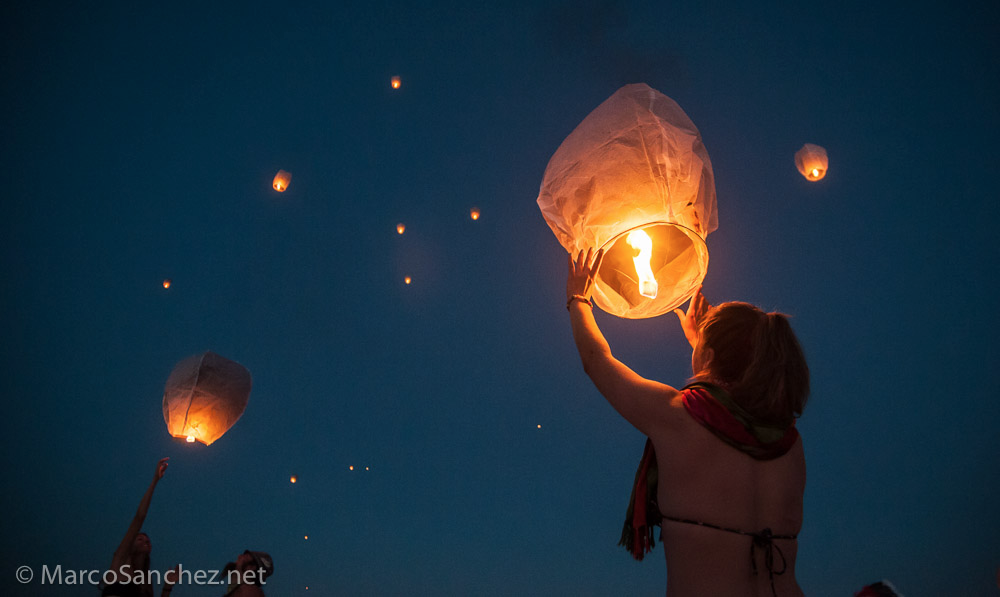
Hot air lanterns being released at the Burning Man Festival.
Photo by Marco Sanchez, via Flickr Creative Commons
The mission of the Zendo Project is to give people space to be wherever the hell they are: The ability to be crazy, to be emotional. I believe that as a culture, our ability to hold paradox is really missing. We need space to be more weird, to be more awakened.
I think of it like a muscle. The bicep, the tricep: These muscles need to be exercised for your body to operate properly. As humans, we also need to exercise the paradox muscle, the grief muscle, the praise muscle, and other emotional muscles.
“Their ability to integrate is not entirely about that person going through it — it’s also about the culture around them.”
The reality of people who are in that space is often not that they’re having a hard time — it’s that people around them are having a hard time. For example: Let’s say somebody loses their mom, and they never process it. Then four years later they take LSD for the first time. They might have to grieve a lot about their mom. Which is awesome! But the people around that person probably just want to have a good time and aren’t prepared to take care of that person, and help them grieve for their dead mother.
So hopefully that person’s friends take that person to the Zendo, and we’re stoked to have them. We’re stoked to have those people who are grieving. And we’re also stoked to have the people who are manic and shouting that they’re God. We say: “Fuck yeah you’re God! Come on in and hang out.”
My belief is that the Zendo Project gives permission for extreme self-expression to be okay. It’s a space for people to have, maybe for the first time in their lives, total acceptance of the weirdness they’re going through.
Their ability to integrate is not entirely about that person going through it — it’s also about the culture around them.
LYDIA: When we met, you mentioned that you had a psychotic break, and that it influenced your work at Zendo as well as your perspective on spirituality. Will you tell me the story?
RYAN: It was a long time ago but I still remember it pretty clearly.
The background behind it was a ten-day ayahuasca retreat in Peru. The woman who ran these retreats was from a pretty traditional lineage. She used to come up and run retreats for us in California. It was a group of us doing it together, and we knew each other pretty well.
The structure of the event was an almost vipassana meditation-like, ten-day silent retreat. We performed the ayahuasca ceremony every five days. During those ten days we did this ayahuasca admixture called Chiric Sanango, an admixture that had something in it that was good for the heart. I had a lot of lucid dreams. For example, I had this really wonderful lucid dream that I was in the superstore version of the Apple Store.
[Editor’s Note: We received a question about the exact dosage and substance that Ryan took, so I’ve put further details in a footnote.]
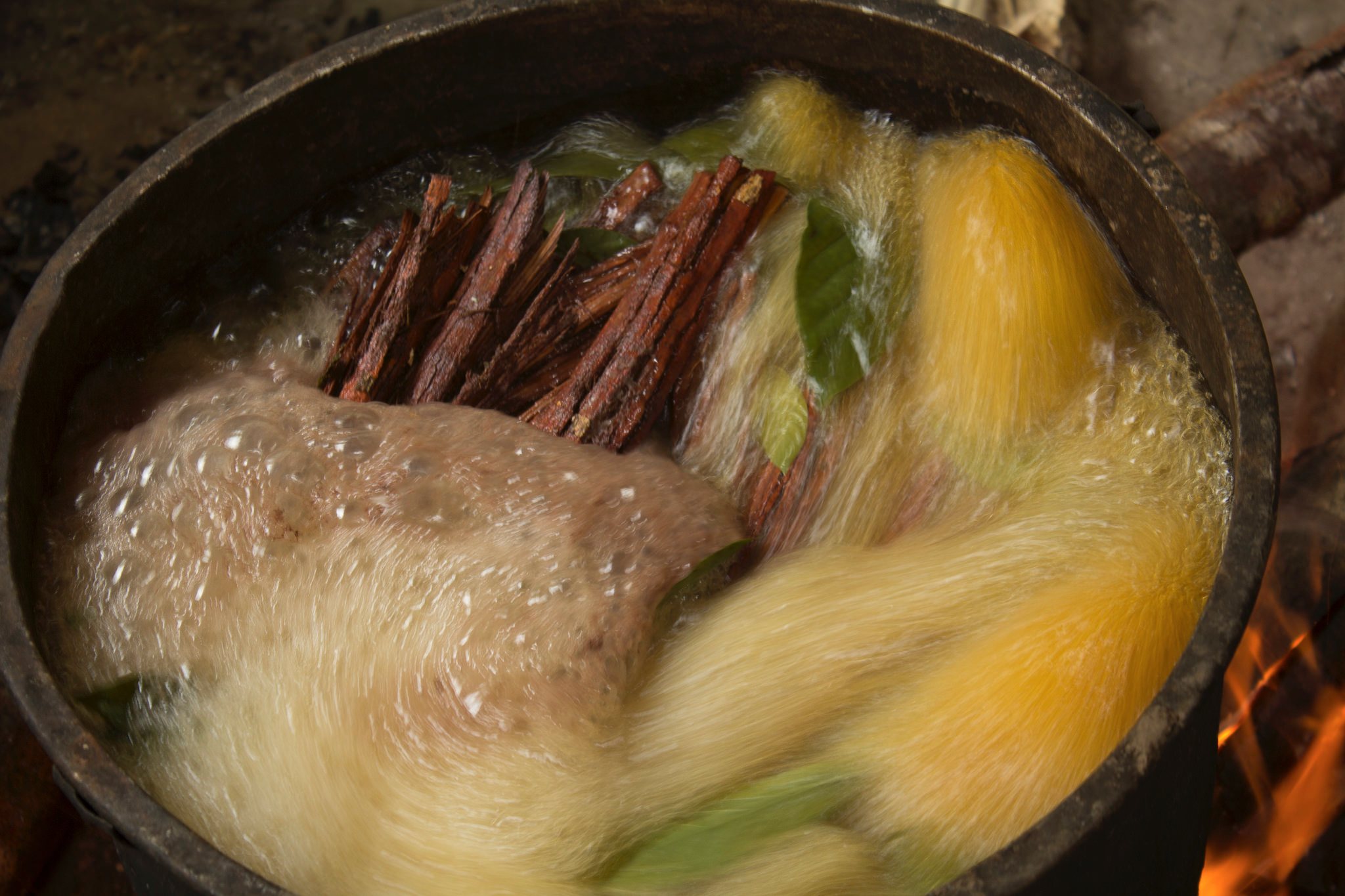
Ayahuasca preparation. Photo by Jairo Galvis Henao, via Flickr Creative Commons
On the final day of the Chiric Sanango, I couldn’t sleep for a few days. The substance itself had a kind of speedy-like quality that amplified my already high metabolism… I went three days without sleep.
After that, when I was finally able to sleep, I only slept an hour. And I had a lucid dream that was a really interesting, very profound, very symbolic dream of flight. When I woke up… it was the only time I’ve ever been fully immersed in a dream and also fully present in my body in bed. I realized I could hear the rain, hear the insects, but I felt myself still dreaming.
I saw this butterfly, and I followed it out into the garden, and I felt a really deep communion with nature. And the butterfly landed on this mushroom, and I was like: Of course I need to eat this mushroom; it’s going to rid my body of the karmic weight I’ve been carrying and give me powers of levitation and light.
So I ate this thing, and about an hour and a half later, I had this freakout that I had eaten a random mushroom! I’d been teaching wilderness survival for six years — what was I thinking? I became convinced it was going to kill me in a slow way. Through the entire night I didn’t sleep again. I’m sure the lack of sleep was a major factor in what came next.
The next morning we took a nine-hour bus trip and I spent the entire time journaling. By that time, I had a very clear messiah complex, delusions of grandeur. Our group had been talking about past lives and previous incarnations and I became convinced that I’d broken through time. I was having strong flashes of previous incarnations.
I felt a lack of general trust in my group because I knew that some part of what I was going through, they weren’t ready to believe. So it was hard to be with them, and it was hard for them to take care of me. For example, at one point, I became convinced that I needed to go through forty days in the wilderness in order to achieve enlightenment, so I tried to escape the group by jumping off a short balcony, but my friends pulled me back before I could jump.
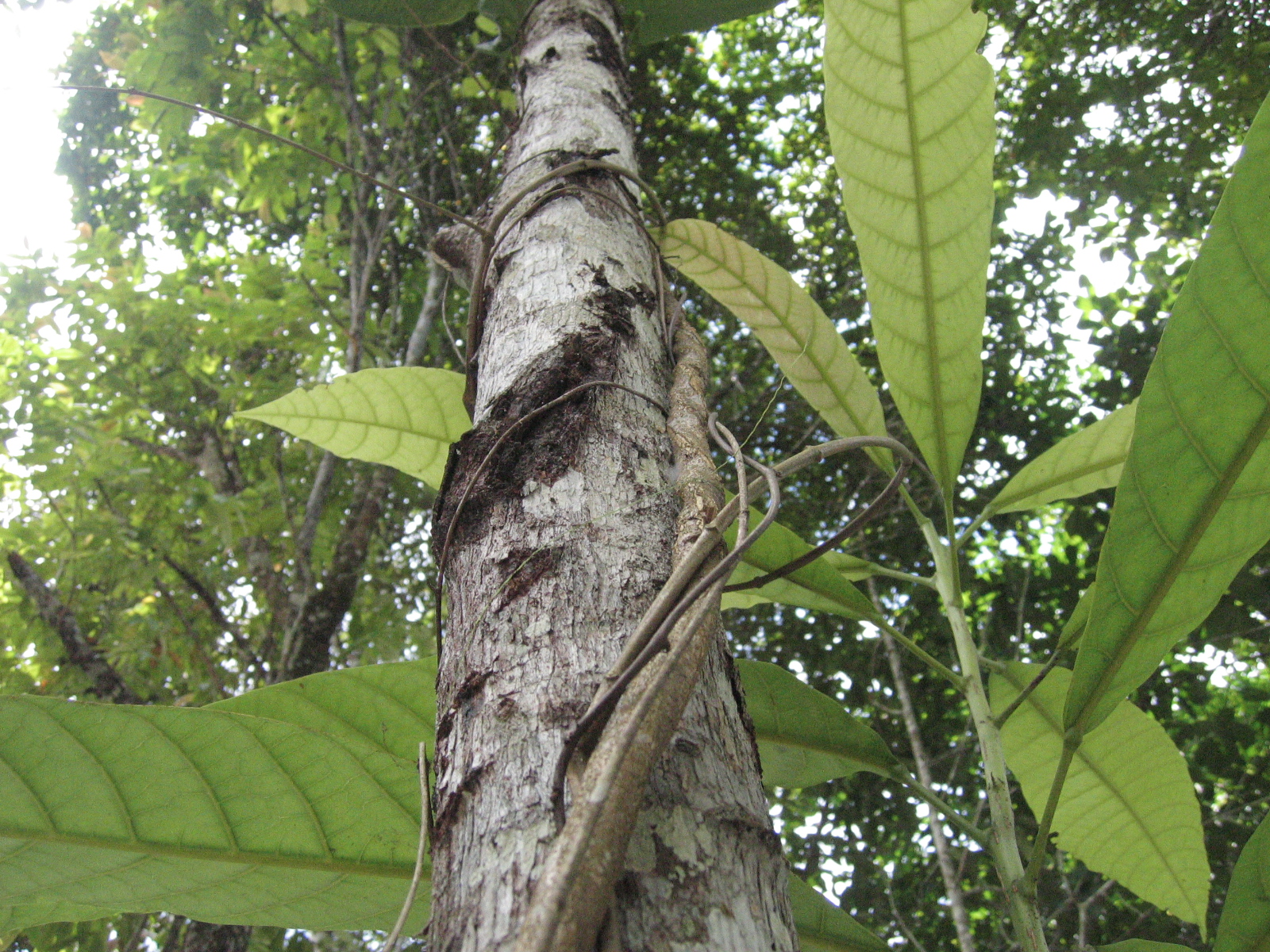
Ayahuasca plant. Photo by Emma and Kunley, via Flickr Creative Commons
We got back to the States… and after a while, my friends were like, “We can’t do this as a full-time job.” So they took me to my family, who got me regular psychiatric care.
At the time, I thought it was such a joke. I had been a psych major myself, and I knew how to answer all their questions. The final conclusion of the psychiatrist was that I was depressed because I broke up with my girlfriend, and he wanted to put me permanently on anti-depressants. He did not know what was up with me at all.
Finally, about two months after the retreat, I hit this wall. I was living with my folks at that point, and I went from the manic episode, delusions of grandeur, and messiah complex to thinking: Fuck, maybe I’m just crazy! Maybe I’m just fucking insane. And this is so embarrassing. I thought I had the key to see into the true nature of the universe and it turns out I’m just psycho.
“I went from the manic episode, delusions of grandeur, and messiah complex to thinking: 'Fuck, maybe I’m just crazy! Maybe I’m just fucking insane. And this is so embarrassing. ' ”
I fully gave into the idea that I was completely crazy and it was all bullshit. So I did my best to stop making trouble. I felt like I had just made a ruckus for everyone. But then, four months after the original experience, I read this book about a Russian Siberian shamanist called Anastasia. It’s the first book in a series called the Ringing Cedars of Russia, by Vladimir Megré. I also read the Oversoul 7 trilogy by Jane Roberts.
Those books helped me see that maybe not everything I saw and felt during my psychotic break had been bullshit. Maybe some of it was real.
And then… Two years previously, I’d submitted an application to an Apple Store that was going to open in my town in the future. So around that time, when I was just starting to come out of my depression, the Apple Store called me and I went in for an interview. Somehow I managed to nail the interview and they hired me. I felt like: Either I’m going to be really good at this game or I’m gonna get outed. But interacting with people at the Apple Store was easy and fun, and I was good at the job, so over the next few months I was able to integrate.
After that, it was three or four years before I did any psychedelics again. And it’s been an interesting eight or nine years ever since. The experience is constantly there. It’s still with me.
It’s an interesting balance to be in this world and make it through the day-to-day. When I take LSD or go on DMT journeys — or even just smoke weed and play video games — those moments are hard and beautiful reminders of where I’ve been. It’s still there, just on the other side of the veil.
I also see this in the people we deal with at the Zendo Project. So I guess the biggest help it’s given me is that I won’t deny anyone’s reality, ever.
“I guess the biggest help it’s given me is that I won’t deny anyone’s reality, ever.”
LYDIA: Do you have a spiritual practice now?
RYAN: It’s constantly expanding. Zen Buddhism has influenced me a lot. I guess I ultimately believe that we’re billions of God selves, reminding each other and reflecting how to be God, how to love, and how to process these parts of ourselves. I love the intro Alan Watts wrote in his book, The Book on the Taboo Against Knowing Who You Really Are, where he unveils: “You Are God in Hiding.”
In terms of specific codified practices, qi gong is one of my practices. I did kundalini for a while, which is beautiful but also very technical; I like having the ability to freestyle.
Given that we are here to experience material reality, some of the most amazing practices we can do are movement, dance, sports, sexuality — honing our bodies to be a beautiful expression of movement.
If God wants to play hide-and-seek, then He’ll do it so well that He’s gonna convince Himself that He’s Ryan, and He’s Lydia, and He’s all the people around us. There’s never a time when we’re not God. But we’re playing a game of being human, separating ourselves and pretending.
Editor's Note: Here are some further details from Ryan about the specific admixture he took during the retreat in South America...
Some curanderas / curanderos use Chiric Sanango directly within their Ayahuasca brews, though most do not. Ours was not part of the ayahuasca but a separate intake.
We had Chiric Sanango as a separate tea that we drank twice a day for 10 days (doing ayahuasca ceremony every other night). Most dietas in Peru are 10 days, where ceremonies are held every day or every other day, but the “helper plant” (in this case, Chiric Sanango — other times Chacruna or whatever plants the maestro feels called to serve) is usually given every day, sometimes more than once a day.
So, to summarize, we had 10 days of twice a day Chiric Sanango (morning and afternoon) and 5 nights of ayahuasca separated by a day off.
Transparency Notes
This interview was conducted and edited by Lydia Laurenson. (Read her NewMo profile here.) The interview was not reviewed by an external fact-checker, but Ryan was given the opportunity to double-check his own quotes. For more about our transparency process, check out our page about truth and transparency at The New Modality.

